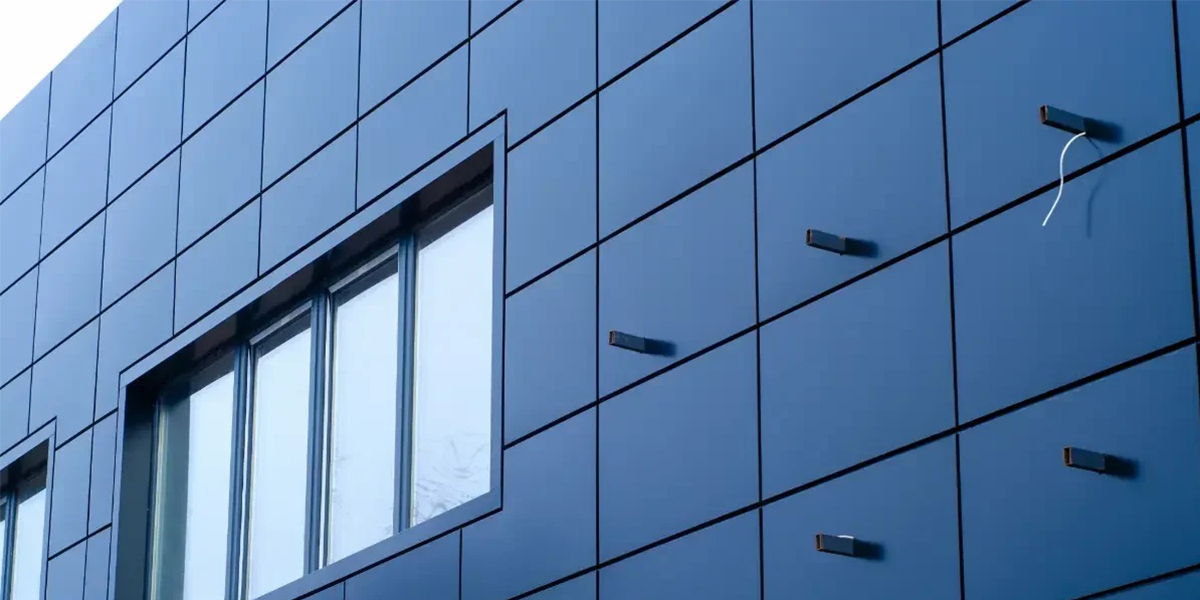
06 Oct ACP Sheet Cladding vs Other Materials: Which Performs Best in 2025
Table of Contents
If you want the best cladding material in 2025, take a close look at acp sheet cladding. You get a winning mix of style, strength, and savings. Many builders trust it because it stands up to tough weather and looks great for years. Check out these numbers:
ACP holds about 42.3% of the aluminum cladding market.
Fire-rated ACP sheets make up 51.3% of the market.
With these stats, you can see why so many people choose ACP for new projects.
Key Takeaways
ACP sheet cladding looks nice and is not heavy. It is strong and lasts a long time. This makes it a great pick for new buildings in 2025.
ACP panels do not need much care. They can last 40 to 50 years. This saves you time and money when compared to wood or stone.
ACP comes in many colors and finishes. You can make creative designs with it. Other materials may not offer as many choices.
ACP is light, so it costs less to install. It is easy to move and put in place.
Many ACP panels use recycled materials. This helps the environment and lowers your carbon footprint.
Cladding Materials Overview
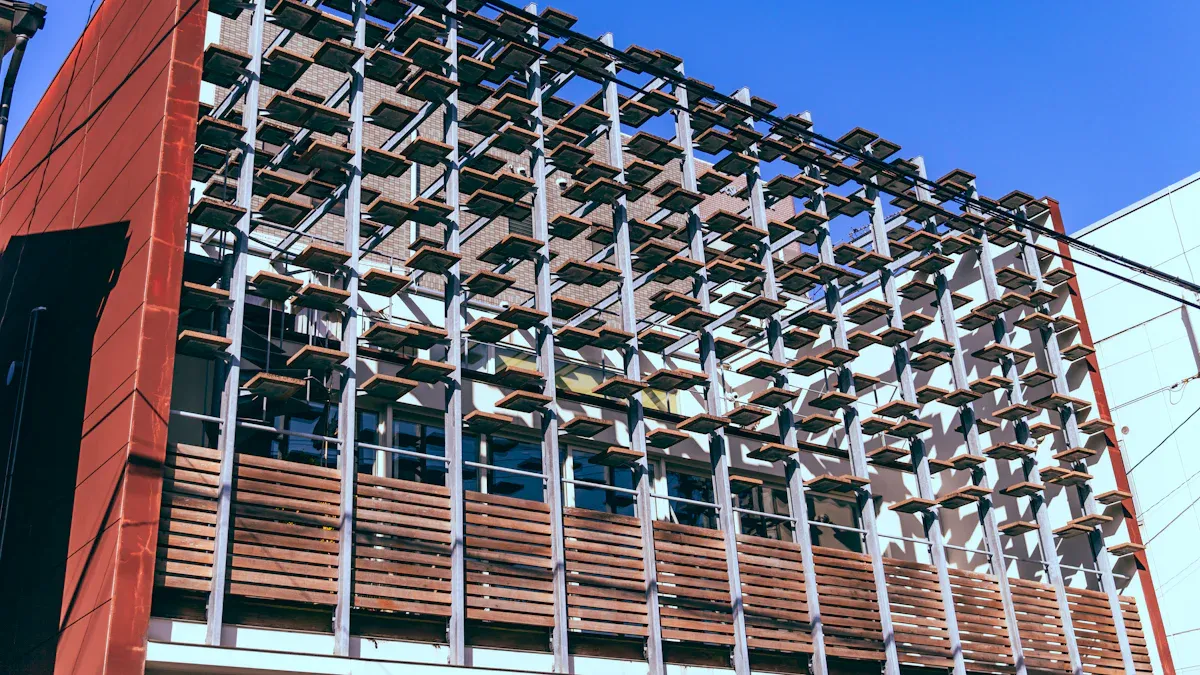
ACP Sheet Cladding
When you look at modern buildings in 2025, you see acp everywhere. These acp panels give you a smooth, stylish finish that stands out. What makes acp special? Each acp panel has two thin aluminum sheets on the outside and a thermoplastic core in the middle. This design keeps acp panels lightweight but strong. You can bend or cut acp panels easily, so you get creative shapes and designs. If you want a building that looks sharp and lasts, acp is a top pick.
You might hear people call them aluminium composite panels. That’s just another name for acp panels. The core inside acp panels can be regular polyethylene or a fire-retardant material. This means acps work well for safety, too. You see acp panels on facades, signs, and even inside buildings. The best part? acp panels come in many colors and finishes. You can pick wood, stone, or even metallic looks. With acp, you get choices.
Other Cladding Materials
You have lots of other cladding materials to choose from. Each one has its own style and strengths. Here’s a quick look at what you might find:
Composition | Characteristics | |
|---|---|---|
Wood | Natural timber | Warm look, needs regular care |
Stone | Natural stone | Heavy, very strong, classic style |
Glass | Tempered glass | Modern, lets in light, fragile |
Fiber Cement | Cement, cellulose fibers | Tough, resists fire and bugs |
HPL | Kraft paper, resin | Durable, many finishes, fire-safe |
Solid Aluminum | Pure aluminum | Lightweight, resists rust, dents easily |
Stainless Steel | Steel alloy | Tough, low maintenance, shiny |
Copper | Copper | Unique color, soft, ages well |
Zinc | Zinc | Strong, resists rust, pricey |
Titanium | Titanium | Super strong, light, very expensive |
You see, acp panels stand out because they mix the best parts of metal and plastic. Other cladding materials like wood or stone give you a different look, but they can be heavy or need more care. acps, on the other hand, stay light and easy to work with. If you want lots of design options, acp panels give you more choices than most other cladding materials.
Tip: If you want a building that’s easy to maintain and looks modern, acp panels are a smart choice. But if you love a natural look, wood or stone might fit your style better.
Durability Comparison
ACP vs Wood
When you look at acp and wood, you see big differences in how long they last. acp panels can give you 40 to 50 years of use with very little work. You do not need to paint or seal them often. In normal weather, acp panels can last 15 to 25 years without much trouble. If you live in a harsh place and do not take care of your acp, you might see problems after 5 to 10 years.
Wood cladding can last anywhere from 20 to 100 years. The type of wood matters a lot. Western red cedar, for example, usually lasts 25 to 35 years. If you pick a strong wood and treat it well, you can get a long life. But wood needs more care. You have to watch for rot, bugs, and cracks. Wet weather can make wood wear out faster.
acp panels: 40-50+ years (low maintenance)
acp panels: 15-25 years (normal conditions)
acp panels: 5-10 years (harsh, no maintenance)
Wood cladding: 20-100+ years (depends on type/treatment)
Western red cedar: 25-35 years
Tip: If you want less work and steady performance, acp panels are a smart pick. If you love the look of wood and do not mind extra care, wood can last a long time.
ACP vs Stone
Stone cladding looks classic and feels strong, but it has some weak spots. acp panels stand up to weather better than stone. They do not crack or break as easily. Stone can chip or break if something hits it hard. acp panels handle bumps and knocks much better. You also get flame-retardant options with acp, which helps with fire safety. Stone does not do well with fire.
Cladding Type | Weather Resistance | Impact Resistance | Fire Resistance | Construction Difficulty |
|---|---|---|---|---|
acp panels | High | Strong | Flame-retardant | Easy |
Stone | Low | Prone to breaking | Poor | Difficult |
If you want a cladding that is easy to install and keeps its strength in bad weather, acp panels win. Stone gives you a strong look, but it can be hard to work with and does not always last as long.
ACP vs Glass
Glass cladding gives buildings a cool, modern look. But glass can break or crack from weather or accidents. acp panels do not have this problem. They are strong and can take hits without breaking.
The most common problems with glass are stress cracks, weather damage, and sometimes even mistakes from the factory. acp panels can warp, lose color, or get corrosion at the edges if you do not install them right. Water can sneak in through bad joints and cause damage over time.
Cladding Type | Common Causes of Failure/Degradation |
|---|---|
Glass | Environmental factors, stress corrosion, manufacturing defects |
acp panels |
Note: You need to make sure acp panels are installed well. If you do not seal the joints, water can get in and cause problems later.
ACP vs Fiber Cement
Fiber cement cladding is tough and does not burn. It stands up to bugs and fire. In places with a lot of rain or humidity, fiber cement does better than acp panels. The core of acp panels does not like constant water. If you live somewhere wet, fiber cement might last longer. But acp panels still give you strong weather resistance and are easier to shape and install.
Fiber cement: Great in high humidity, strong against water.
acp panels: Good in most weather, but not the best with lots of water.
ACP vs HPL
High-pressure laminate (HPL) cladding is another strong choice. HPL panels resist scratches and fire. They come in many colors and styles, just like acp panels. But HPL can chip if you hit it hard. acp panels handle impacts better and keep their shape. If you want a cladding that stays strong after bumps and knocks, acp panels are a better bet.
ACP vs Solid Aluminum
Solid aluminum cladding is light and resists rust. It is strong, but it can dent if something hits it hard. acp panels are also light, but their layered design gives them extra strength. acp panels do not dent as easily and keep their look longer. If you want a cladding that stays strong and looks good, acp panels are a top choice.
If you want the best mix of strength, easy care, and long life, acp panels give you great performance. You get strong weather resistance, impact strength, and a finish that lasts.
Cost Analysis
 ACP Sheet Cladding
ACP Sheet Cladding
When you look at building materials in 2025, you want something that saves you money and still looks great. That’s where acp comes in. You get a material that is both cost-effective and stylish. Many people choose acp because it gives you a modern design without breaking the bank.
Let’s talk numbers. Here’s what you can expect to pay for acp sheet cladding:
In India, the price for acp cladding ranges from ₹50 to ₹200 per square foot.
In the United States, you’ll see prices starting at $2.00 per square foot.
The installation cost for aluminum composite panels usually falls between $25 to $45 per square foot.
The material cost for aluminum composite panels is between $4 to $20 per square meter.
You can see why acp is so popular. The lightweight panels make installation quick and easy. You don’t need heavy equipment or a big team. This means you save on labor and time. The panels also come in many design options, so you can match any style you want.
Maintenance is another area where acp shines. You don’t have to spend much to keep your building looking fresh. The panels resist stains and weather, so you won’t need to repaint or repair them often. This adds to the overall cost-effectiveness of acp. You get a long-lasting finish and a modern design for less money.
Tip: If you want a building that stands out and stays within your budget, acp sheet cladding is a smart choice. You get the best mix of cost, design, and durability.
Other Cladding Materials
Now, let’s see how other cladding materials stack up against acp. You might like the look of wood, stone, or glass, but these options often come with higher costs and more work. Here’s a quick comparison:
Material Type | Installation Cost | Maintenance Cost |
|---|---|---|
ACP | Reduced due to durability | |
Wood | Higher due to material and labor costs | Frequent repairs needed |
Stone | Higher due to heavy material and labor | Moderate, but can be costly |
Glass | Higher due to installation complexity | Moderate, but requires upkeep |
Wood cladding gives you a warm, natural design, but you pay more for both the material and the labor. You also need to spend on regular repairs and treatments. Stone looks classic and strong, but it is heavy and hard to install. This drives up the cost. Glass offers a sleek, modern design, but you need skilled workers and special tools. This makes the installation expensive.
When you compare these materials to acp, you see a clear difference. acp gives you more design choices and keeps your costs down. You don’t have to worry about frequent repairs or complicated installations. This makes acp the most cost-effective option for many projects in 2025.
If you want to balance cost, design, and easy care, acp sheet cladding is hard to beat. You get a modern look, lots of design flexibility, and a price that fits most budgets.
Maintenance Needs
ACP Sheet Cladding
If you want a cladding option that gives you low maintenance, acp is a great choice. You do not have to worry about constant repairs or heavy cleaning. Over a 10-year period, you can keep your acp looking sharp with just a few simple steps:
Clean your acp panels once or twice a year. Use a mild detergent and a soft cloth or sponge.
Check the sealants and joints every year. Look for any signs of damage.
Remove things like bird droppings or tree sap as soon as you see them.
Avoid drilling or cutting into the acp surfaces. This helps prevent physical damage.
You will notice that acp panels are known for their low maintenance needs. You do not need to paint or seal them often. The surface stays smooth and bright for years. If you want a building that looks modern and fresh, acp makes it easy. You can spend less time on maintenance and more time enjoying your space. Many people pick acp because it offers low maintenance and long-lasting results.
Other Cladding Materials
When you look at other cladding materials, you will see that not all of them offer low maintenance. Here is a quick comparison between acp and wood:
Feature | ACP | Wood |
|---|---|---|
Maintenance | Low | High |
Durability | High | Medium |
Weight | Light | Heavy |
Wood cladding needs regular painting, sealing, and repairs. You have to watch for rot and bugs. Stone cladding lasts a long time, but it is heavy and needs special support. This makes maintenance harder and more expensive.
Common challenges for glass facades include water spots, mineral deposits, and structural damage due to weather fluctuations. Regular maintenance is critical to prevent these issues from worsening over time.
For HPL cladding, challenges include avoiding tough stains, regular dusting, and the need to avoid excessive water exposure, as prolonged moisture can lead to significant damage.
You will also find that fiber cement and HPL panels need regular care. HPL surfaces resist stains, but too much water can cause problems. If you want a cladding that truly gives you low maintenance, acp stands out from the rest.
Aesthetic Options
 ACP Sheet for Exterior
ACP Sheet for Exterior
When you want your building to stand out, you should look at acp sheet for exterior projects. This material gives you so many choices. You can pick from a huge range of colors and textures. In 2025, acp sheet for exterior designs let you get creative with your exterior cladding. You can match almost any style you want.
Here are some of the most popular finishes for acp sheet for exterior use:
Wood texture: Choose from oak, walnut, teak, or maple. You get the warmth of wood without the extra work.
Stone texture: These panels look like real stone. They add a natural touch to your exterior cladding.
Marble texture: Go for a smooth, glossy finish. You can pick from many colors and patterns.
Metallic texture: Shiny and modern, these panels make your building pop.
High-gloss texture: If you want a sleek, polished look, this is a great choice.
You can use acp sheet for exterior walls to create bold patterns or even curves. The versatility of acp means you can try new ideas that other materials just can’t match. Many architects love acp because it lets them design buildings that look unique and modern. You can even mimic the look of wood or stone, but you get a lighter, easier-to-care-for surface.
Tip: If you want a building that looks fresh for years, acp sheet for exterior use is a smart pick. You get style, versatility, and easy maintenance all in one.
Other Cladding Materials
Other exterior cladding materials also offer unique looks, but they have some limits. Wood gives you a classic, warm feel. It looks great, but you do not get as many color choices. You also need to spend more time on care. Stone cladding brings a strong, timeless look. It works well for bold designs, like linear geometric patterns or textured stone blocks. You might see dark stones for contrast or even a mix of stone and glass for a modern touch.
Glass cladding makes buildings look sleek and bright. It lets in lots of light, but it can be fragile. Fiber cement and HPL panels come in different colors, but they do not match the versatility of acp sheet for exterior projects. Stone is heavy and hard to install, while wood needs regular upkeep.
acp gives you more design freedom than wood, stone, or glass.
You can use acp sheet for exterior walls to try new shapes and patterns.
The versatility of acp helps you keep up with the latest trends in exterior cladding.
If you want a material that lets you dream big, acp sheet for exterior use is hard to beat. You get the look you want, the versatility you need, and a finish that lasts.
Installation Process
ACPs
When you choose acp for your project, you get a smooth and fast process. You will notice that acps are light, so you can move them easily. You do not need heavy machines to lift acp panels. Most people like acp because you can cut, bend, or shape acp panels with simple tools. You can fit acp panels on many surfaces, like concrete or brick.
Here is how you usually work with acps:
Measure the wall and plan where each acp panel will go.
Fix a metal frame to the wall. This frame holds the acp panels in place.
Attach the acp panels to the frame. You can use screws or special clips.
Seal the joints between acp panels. This keeps water out and helps acp panels last longer.
Clean the surface of the acp panels after you finish.
You can finish a big wall with acp panels in just a few days. You do not need to wait for paint to dry or for cement to set. If you want to change the look later, you can remove acp panels and put up new ones. Many people pick acps because you save time and money. You also get a neat finish every time.
Tip: Always check the edges of your acp panels. If you seal them well, your acps will look great for years.
Other Cladding Materials
Other materials do not make things as easy as acp. Wood takes more time. You need to cut each piece and treat it before you put it up. Stone is heavy. You need strong support and more workers. Glass looks nice, but you must handle it with care. It can break if you drop it.
Here is a quick look at how other materials compare to acp panels:
Material | Speed | Tools Needed | Skill Level |
|---|---|---|---|
acp panels | Fast | Simple | Basic |
Wood | Medium | Saw, drill | Skilled |
Stone | Slow | Heavy tools | Expert |
Glass | Medium | Special suction | Skilled |
You will see that acp panels make your job easier. You do not need to worry about heavy lifting or special skills. If you want a fast and clean job, acps are the way to go. You can trust acp to give you a modern look with less work.
Sustainability
ACP Sheet Cladding
If you care about the planet, acp sheet cladding can help. Many acp panels use recycled materials. This saves resources and means less mining. acp panels last a long time and need little care. You do not have to fix them often, so there is less waste.
But making acp uses lots of energy. This can cause greenhouse gases. Mining aluminum can hurt forests and animals. If you throw away acp panels the wrong way, they can pollute the earth. Burning them is bad for the environment.
You can pick eco-friendly acp sheet cladding. These panels use more recycled stuff and less energy. They help you lower your carbon footprint. Many acp panels have certificates like ISO 14001 and ISO 9001. Some also have fire safety certificates like EN 13501-1 and NFPA 285. These show the panels meet strict rules.
Tip: Ask your supplier about recycled materials and certificates before you buy acp sheet cladding. This helps you choose the best option for the planet.
Other Cladding Materials
You can pick from many cladding materials, but not all are good for the earth. Solid aluminum cladding can be recycled, just like acp. Wood is natural, but cutting trees can cause deforestation. Stone and glass last long, but they need lots of energy to make and move.
Fiber cement and HPL do not recycle as easily as acp panels. This means more trash in landfills. These materials may not give you as many design choices or weather resistance as acp. If you want strong and eco-friendly cladding, acp panels and solid aluminum are top picks.
Here’s a simple table to compare:
Cladding Material | Recyclable | Certifications Available | Design Flexibility | Resistance |
|---|---|---|---|---|
ACP Sheet Cladding | Yes | ISO 14001, EN 13501-1 | High | High |
Solid Aluminum | Yes | Varies | Medium | High |
Fiber Cement | No | Limited | Medium | Medium |
HPL | No | Limited | Medium | Medium |
Wood | No | FSC (if certified) | Medium | Low |
You want cladding that is easy to design and strong against weather. acp panels give you both and are easier to recycle than most other materials. If you want something reliable and good for the planet, acp is a smart choice.
Summary Table
You want to see how ACP sheet cladding stacks up against other cladding materials? Here’s a quick look at the key features that matter most when you’re picking the right option for your project. This table makes it easy to spot the differences at a glance:
Feature | ACP Sheets | Other Cladding Materials |
|---|---|---|
Durability | Highly resistant to weather, rust, and UV rays. | Can be prone to moisture, termites, or warping. |
Maintenance | Low – just needs occasional cleaning. | High – needs sealing, polishing, or pest control. |
Weight | Lightweight and easy to install. | Heavier, harder to use on tall walls. |
Cost-Effectiveness | Higher upfront, but saves money over time. | Cheaper at first, but costs more to maintain. |
Aesthetics | Many modern finishes: metallic, wood, mirror. | Fewer choices unless you paint or treat. |
UV Resistance | Excellent – colors stay bright. | Can fade in strong sun. |
Fire Resistance | Fire-rated options available. | Some fire-safe types, but not all. |
Sustainability | Many brands use recycled cores. | Some can release fumes or are hard to recycle. |
Tip: If you want a cladding that’s easy to care for and looks modern, ACP sheets are a smart pick. But if you love a classic or natural look, you might prefer wood or stone—even if they need more work.
Let’s break down the numbers even more. Here’s a table showing how different materials compare for durability, maintenance, and price per square foot:
Material | Durability | Maintenance | Price Range (USD/sq. ft.) |
|---|---|---|---|
ACP Sheets | High | Very Low | $2.00 – $7.00 |
Wood | Medium | High | $2.84 – $6.81 |
Stone (Granite) | Very High | Very Low | $0.60 – $1.80 |
Fiber Cement | Very High | Low | $1.80 – $3.60 |
HPL Panels | High | Low | $2.40 – $4.20 |
Glass | High | High | $3.00 – $7.20 |
Aluminum | Very High | Very Low | $2.40 – $5.40 |
Vinyl (uPVC) | Moderate | Very Low | $0.96 – $1.80 |
Want to see how prices compare across even more materials? Check out this chart:
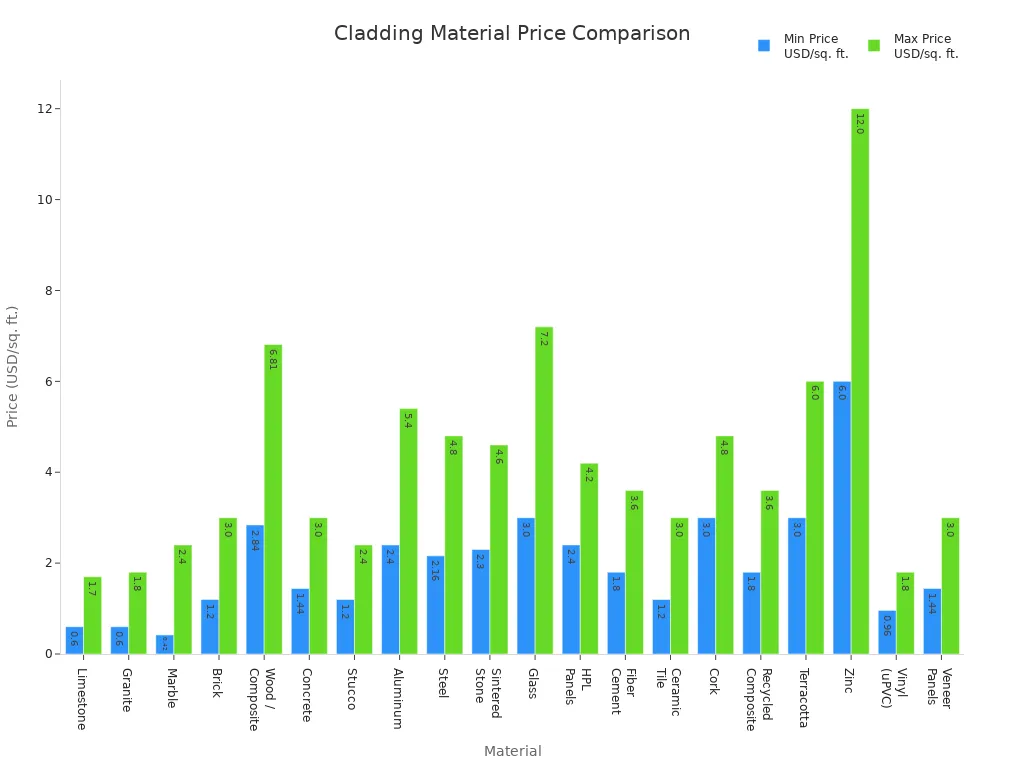
You can see that ACP sheets give you a great balance of price, durability, and easy care. If you want to save time and money while keeping your building looking sharp, ACP is tough to beat.
Recommendations
Picking cladding for your building in 2025 can be tough. You want it to look nice, last long, and not cost too much. Let’s make it simple so you can choose what works best for you.
Think about these important things before you decide:
Durability and Weather Resistance: Choose a material that handles rain, sun, and wind.
Aesthetic Versatility: Make sure the cladding fits your style and ideas.
Energy Efficiency: Good insulation keeps your building comfy and saves money.
Fire Safety Standards: Check if the material follows fire safety rules.
Low Maintenance Requirements: Less work means more free time and lower costs.
Sustainability and Environmental Impact: Pick materials that can be recycled or use recycled stuff.
Weight and Structural Compatibility: Lighter materials are easier to put up and don’t stress your building.
Acoustic Performance: If you want quiet, look for good sound insulation.
Cost and Long-Term Value: Think about the price now and what you’ll spend later.
Adaptability to Design Trends: Pick something that won’t look old soon.
Here’s a simple table to help you compare ACP sheet cladding with other materials:
Aspect | ACP Sheet Cladding | Other Materials |
|---|---|---|
Budget | May need more repairs and upkeep | |
Aesthetics | Many colors and textures available | Fewer choices, depends on material |
Sustainability | Often made from recycled materials, recyclable | Varies, sometimes less eco-friendly |
Fire Safety | Many panels have fire-resistant cores | Depends on what you pick |
Tip: If you want the best value, ACP sheet cladding gives you a modern look, easy care, and strong performance. If you like classic or natural styles, wood or stone might be better, but you’ll have more work and higher costs.
You’ve seen that ACP sheet cladding stands out for its quick installation, light weight, and flexible design. It often beats brick, stone, and fiber cement in cost and ease of use. If you want a long lifespan and modern look, ACP is a smart pick. Still, some projects may need the strength or natural feel of stone or wood. When you choose cladding, think about what matters most to you and watch for trends like eco-friendly designs, smart features, and clean lines.
Eco-conscious design is on the rise.
Smart features and clean, matte finishes are popular.
Natural textures and recycled materials are gaining ground.
FAQ
What makes ACP sheet cladding a good choice for my building?
You get a lightweight panel that resists weather and stays looking new. ACP sheets come in many colors and textures. You can install them quickly and clean them easily. Most people like the modern style and low maintenance.
Can I use ACP sheets for both inside and outside walls?
Yes, you can! ACP sheets work well for exterior facades and interior walls. You get a smooth finish and lots of design options. You can match any style you want.
How do I clean ACP sheet cladding?
Just use a soft cloth and mild soap. Wipe the panels gently. You do not need special cleaners. Avoid harsh chemicals or rough brushes. You can keep your building looking fresh with simple cleaning.
Is ACP sheet cladding safe in case of fire?
Many ACP sheets have fire-retardant cores. You can ask your supplier for fire-rated panels. These meet safety standards and help protect your building. Always check for certifications before you buy.
How does ACP compare to wood or stone for long-term costs?
ACP sheets cost less to install and maintain. You do not need to paint or repair them often. Wood and stone need more care and can cost more over time. ACP gives you better value for your money.

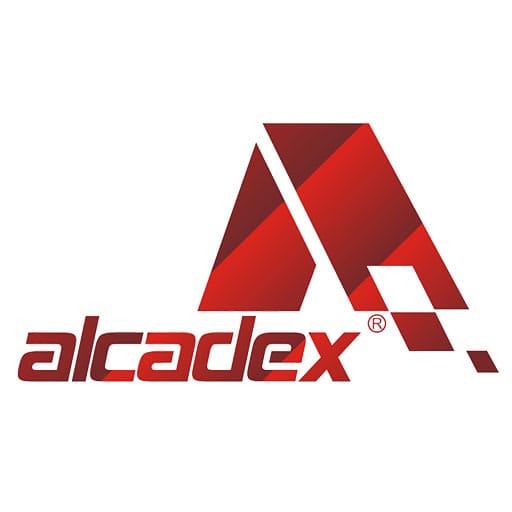

 ACP Sheet Cladding
ACP Sheet Cladding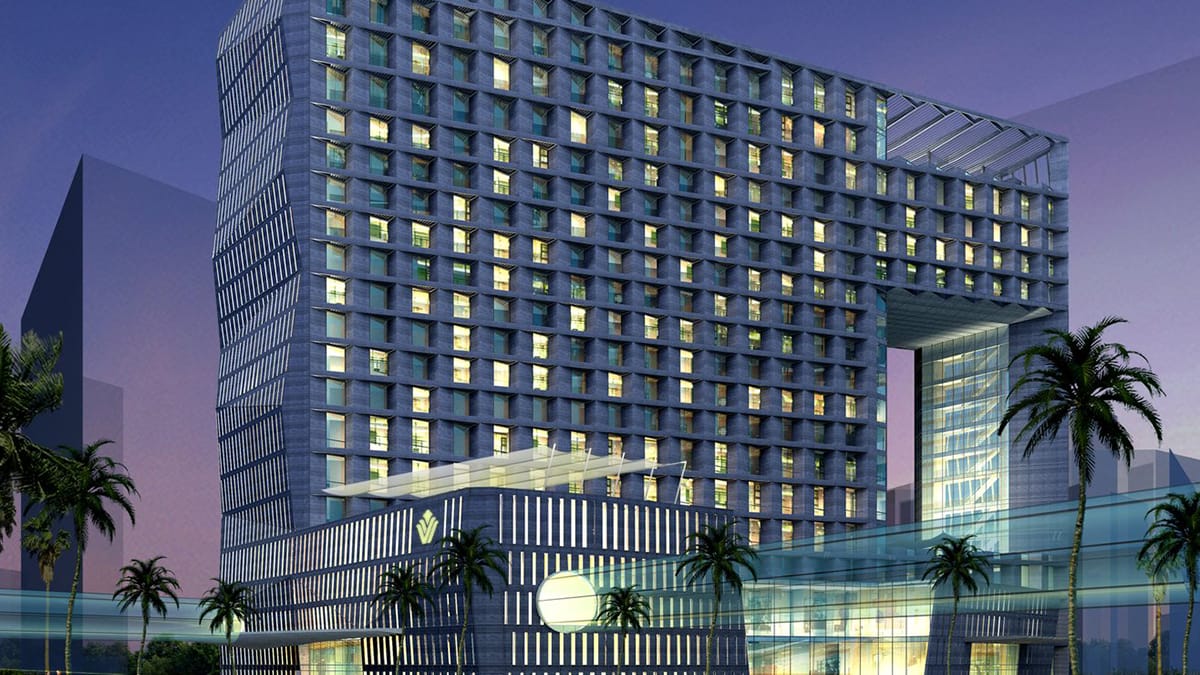 ACP Sheet for Exterior
ACP Sheet for Exterior